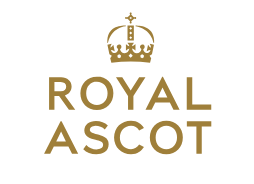 Brought to you by Tropical Racing
Brought to you by Tropical Racing
Past the Wire takes a quick look at the upcoming Group 1 stakes at Royal Ascot
It’s time for the traditional glitz, glamour, pomp and ceremony that accompanies the fashionable June Royal Ascot meeting which showcases eight Group 1’s and 11 more at the Group 2 and 3 level.
Royal Ascot has earned iconic status as a centerpiece of the social calendar, and is Britain’s most valuable race meeting, attracting the finest racehorses, trainers and jockeys in the world all fighting for a piece of the hefty purses offered throughout the five-day spectacle, as well as the prestige that comes with landing a winner at the track.
However, there is one long-standing tradition which is in jeopardy, and it involves the presence of the Queen. It’s unknown whether Her Majesty, who for seven decades has been a regular fixture at the summer meeting, will be able to attend.
Opening day is highlighted by a trio of Group I events, led by the Queen Anne Stakes. Established in 1840 and previously called the Trial Stakes, this one-mile event for 4-year-olds and up opens the meeting and commemorates the monarch who established horse racing at Ascot more than 300 years ago.
King’s Stand Stakes – The 5-furlong race for 3-year-olds and up came about in 1860 when it replaced the two-mile Royal Stand Plate which could not be run due to heavy rain. The reconfigured and improvised event was run over the only part of the course that was raceable.
St. James’s Palace Stakes – Named after one of the Royal residences of the Tudor period, three-year old colts contest seven furlongs and 213 yards. The inaugural running in 1834 saw a lone horse entered, thus deeming the race a walkover.
Here are the remaining Group 1’s that round out the Royal Meet.
Wednesday – Prince of Wales Stakes – The highlight on the second day of meet is one of the most popular races during the festival. Established in 1862, the original event was run over 1 mile and 5 furlongs until 1939 before racing was suspended with the advance of World War II. Absent from Royal Ascot from 1940 -1967, the race for 4-year-olds and up re-emerged in 1968 with the distance changed to the current one mile and one furlong.
Thursday – Gold Cup – First held in 1807, the gem of the Royal Meeting is Ascot’s most historic race and one of the oldest races in the United Kingdom. Since its inaugural running, the Gold Cup, open to 4-year-olds and up, has been staged at two miles and three furlongs plus 210 yards, and draws some of the best stayers from all over the world.
Friday – Commonwealth Cup – This six-furlong event was added to the Royal Ascot meeting in 2015, replacing the Buckingham Palace Stakes. The Commonwealth is open to three-year-olds only and was the first age-restricted Group 1 race open to geldings in Europe. Another Group 1, the Coronation Stakes, dots the lineup on this day. This race for 3-year-old fillies was first run in 1840 to celebrate the coronation of Queen Victoria two years earlier. It is the fillies’ equivalent of the St. James’s Palace Stakes in both status and distance.
Saturday – Platinum Jubilee Stakes – The feature on the final day of Royal Ascot has undergone a few changes since it was first run in 1868. Originally the All-Aged Stakes, before being changed to the Cork and Orrery Stakes in 1936. This fast paced six-furlong event for fillies was renamed the Diamond Jubilee Stakes in 2002 to celebrate the golden anniversary of Queen Elizabeth II’s ascension to the throne. Ten years later in 2012, the race was named the Diamond Jubilee Stakes to commemorate her 60-year anniversary and this year to celebrate 70 years of monarchy, it was once again renamed and is called the Platinum Jubilee Stakes. When the Commonwealth Cup was added, the age requirement of the Jubilee was changed to four-year-olds or older, but three-year-olds from the Southern Hemisphere can also enter.
Photo: Royal Ascot logo


